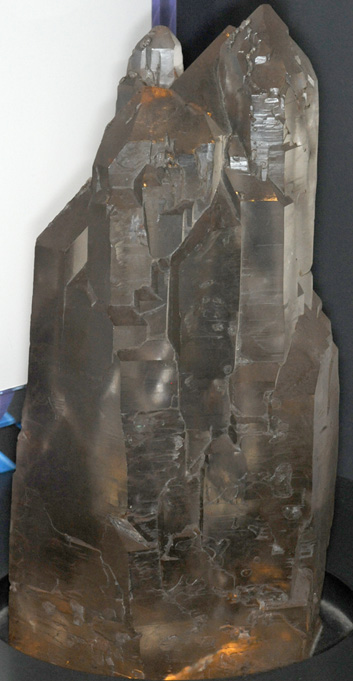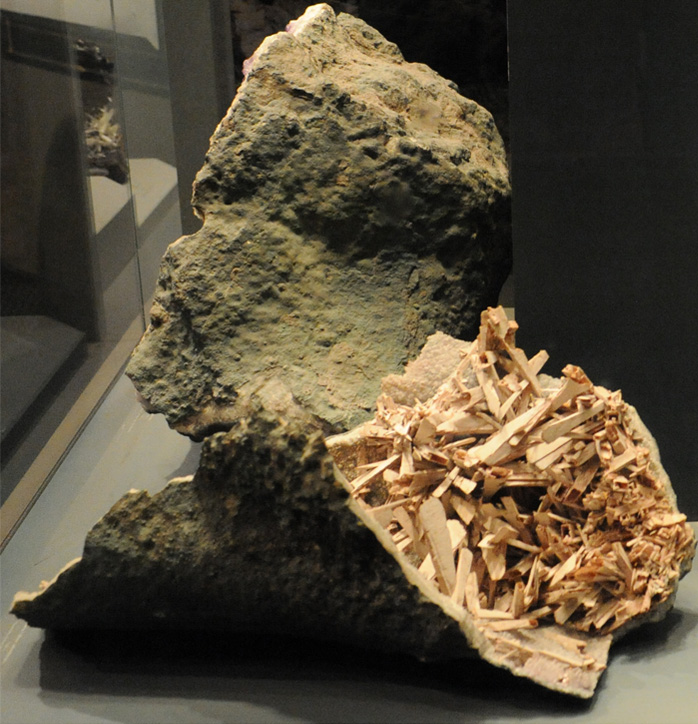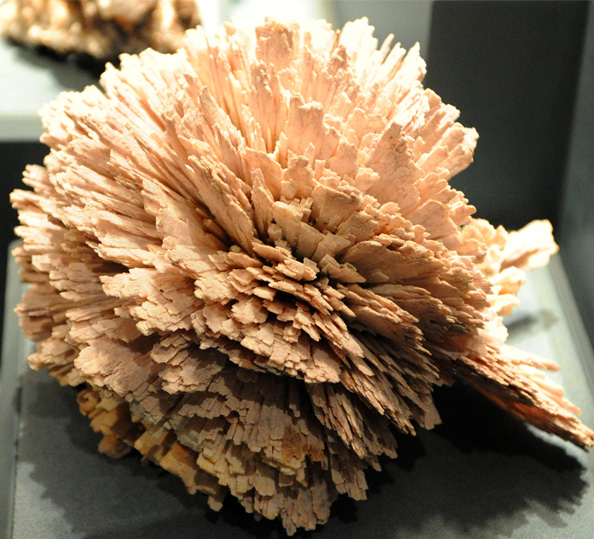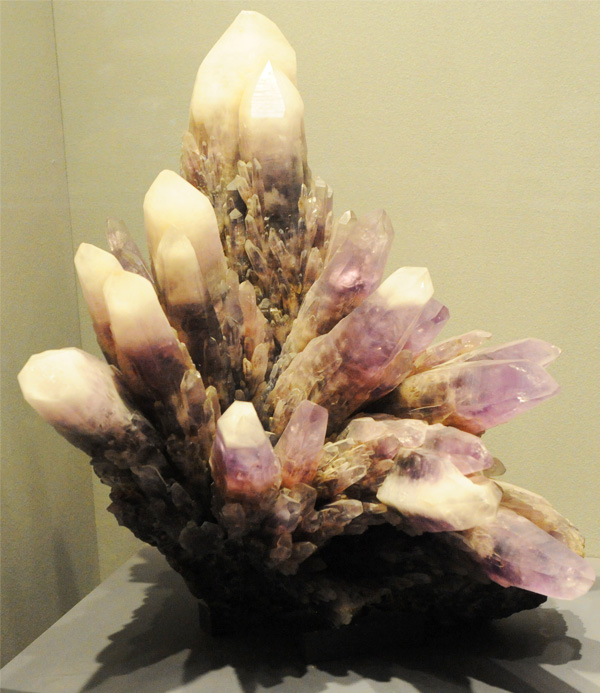Forms of Quartz
Quartz is silicon dioxide, SiO2. Quartz is abundant in the Earth's crust, being the chemically simplest form of the silicates. All the samples here are displayed in the Smithsonian Museum of Natural History.
This sample of quartz at right is from Minas Gerais, Brazil. The sample is about 50 cm high.  The size of this quartz sample can be appreciated in comparison with the person walking by on the other side of it. It is described as smoky quartz and the sample is about 50 cm high. Its origin is Minas Gerais, Brazil and its mass is listed as 32.6 kg. |  |

It is hard to believe that the image above is quartz, since we envision quartz as a clear crystal. This sample is displayed in the Smithsonian Museum of Natural History. The object is 40-50cm across. It is described as quartz after anhydrite.
 | This sample is also quartz after anhydrite. "Quartz after anhydrite" means that it initially formed as anhydrite crystals and then was chemically replaced by quartz while retaining the crystal shape of the anhydrite precursor. This sample is about 20cm across and is from Irai, Rio Grande do Sul, Brazil. |
 | This quartz sphere appears to be 50-60 cm in diameter and is labeled as weighing 242,323 carats. It was cut and polished in China in 1923-24. Its origin is speculated to be Burma, but no one knows.  |
|
This huge display of amethyst crystals is about 60x60 cm and is from Guerrero, Mexico. |
 |
| More quartz varieties |
| Minerals |
| HyperPhysics***** Geophysics | R Nave |